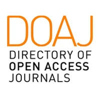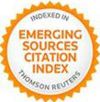Interactive dissemination of the 3D model of a baroque altarpiece: a pipeline from digital survey to game engines 
Abstract
The dissemination of reality-based models allows a more exhaustive knowledge of the object of study and enables a better access through real-time applications running on common devices connected to the web. In addition, difficult-to-appreciate works of art can become object of specifically designed serious educational games through the possibilities allowed by game engines. The definition of a pipeline that leads from a reliable acquisition of shape, color and BRDF features to a motivating and satisfying interactive experience is the focus of this paper. It will be analyzed, in an interdisciplinary perspective, and will undergo a series of steps aimed at preserving the features of the work of art without compromising its realistic and fluid visualization, as well as the characteristics at the base of the stylistic and artistic quality.
Keywords
Full Text:
PDFDOI: http://dx.doi.org/10.2423/i22394303v8n2p59
References
Annetta, L. A., & Meng-Tzu, C. (2008). Why Educational Video Games? In L. A. Annetta, Serious Educational Games, From Theory to Practice (pp. 1-12). Rotterdam / Taipei: Sense Publishers.
Apollonio, F. I., Ballabeni, M., Bertacchi, S., Fallavollita, F., Foschi, R., & Gaiani, M. (2017). From documentation images to restauration support tools: a path following the Neptune fountain in Bologna design process. Geomatics & restoration – Conservation of Cultural Heritage in the Digital Era, Göttingen, Copernicus GmbH (Copernicus Publications), 2017, XLII-5, pp. 329 - 336 (proceedings of GEOMATICS & RESTORATION – Conservation of Cultural Heritage in the Digital Era, Florence, 22-24 May 2017)
Arróniz, A. (1903). Marrajos y Californios. El Porvenir. 10/04/190, pp. 5-6.
Cabezos Bernal, & P. M. y Rossi, A. (2017). Virtual musealization techniques. The Capitals of the Monastery of San Cugat. EGA. Revista de expresión gráfica arquitectónica, 29, 48-57.
Cantos Martínez, O., Lodeiro Pérez, J. M., & Laguna Rodríguez, F. J. (2009). La fotogrametría como apoyo gráfico en la restauración de los retablos escultóricos en madera policromada. Patrimonio Cultural de España, 1, pp. 237-149.
Ceballos Enríquez, L. (Coord) (2017). The COREMANS Project. Intervention criteria for altarpieces and polychrome sculpture, Madrid, Ministerio de Educación, Cultura y Deporte.
Cipriani, L., & Fantini, F. (2015). Elementi per un rilievo geométrico e la restituzione fotorealistica di modelli 3D reality-based. In M. Gaiani (Ed.), I portici di Bologna: Architettura, Modelli 3D e ricerche technologiche (pp. 95-115). Bologna: Bononia University Press.
Cipriani, L., Fantini, F., & Bertacchi, S. (2015). El color en las piedras y los mosaicos de Rávena: nuevas imágenes de los monumentos antiguos a través de la fotogrametría no convencional de última generación. EGA. Revista de expresión gráfica arquitectónica, 26, 190-201.
Clini, P., Quattrini, R., Frontoni, E., & Nespeca, R. (2017). Real/Not Real: Pseudo-Holography and Augmented Reality Applications for Cultural Heritage. In A. Ippolito, M. Cigola (Eds.), Handbook of Research on Emerging Technologies for Digital Preservation and Information Modeling. Hershey: IGI Global.
Grilli, E., Dininno, D., Petruccid, G., & Remondino, F. (2018). From 2D to 3D supervised segmentation and classification for cultural heritage applications. In Int. Arch. Photogramm. Remote Sens. Spatial Inf. Sci., XLII- 2, 399-406, 2018 (pp. 399-406).
Dávila, M. (2014). Restitución fotogramétrica de retablos. Naves laterales de San Jacinto, Caracas. Blucher Design Proceedings, 1 (8), 158-161.
Hernández Albaladejo, E. (1996). José Capuz, un escultor para la Cofradía Marraja. Cartagena: Cofradía de Nuestro Padre Jesús Nazareno.
Ippoliti, E., Casale, A., & Guadagnoli, F. (2019). Giving Form to Absence: Experiences in Representation, Communication, and Narration for the Places and Community of Amatrice. In C. Inglese, & A. Ippolito (Eds.), Analysis, Conservation, and Restoration of Tangible and Intangible Cultural Heritage (pp. 329-365). Hershey, PA: IGI Global.
Jakob, W., Tarini, M., Panozzo, D., & Sorkine-Hornung, O. (2015). Instant Field-Aligned Meshes. ACM Transactions on Graphics, 34(6), 1-15. DOI:10.1145/2816795.2818078
López Martínez, J. F. (2017). “Del mármol clásico a la talla policromada. Resemantización de una imagen el mundo clásico pagano en icono devocional Cristiano”. In A. Cañestro (Ed.), Estudios de escultura en Europa (pp. 73-82). Alicante: Instituto Alicantino de Cultura.
McDermott, W. (2018). The Comprehensive PBR Guide by Allegorithmic - vol. 1. Light and Matter: The theory of Physically-Based Rendering and Shading. Retrieved 5/04/2018 from https://academy.allegorithmic.com/courses/b6377358ad36c444f45e2deaa0626e65
Mena Marqués, M. (1990). Catálogo de dibujos. VII. Dibujos italianos del siglo XVIII y del siglo XIX. Madrid: Museo del Prado.
Maestre de San Juan, & Pelegrín, F. (1999). Semblanza histórica de los Hermanos Mayores de Nuestro Padre Jesús Nazareno durante el siglo XVIII. Ecos del Nazareno, XX, 4-11.
Maestre de San Juan Pelegrín, F. & Montojo Montojo, V. (2004). Cofradías y capillas penitenciales de Cartagena y Murcia: corporativismo, liderazgo e integración a través de la religiosidad. Murgetana, 111, 47-67.
Minto, S., & Remondino, F. (2014). Online access and sharing of reality-based 3d models. SCIRES-IT - SCIentific RESearch and Information Technology, 4 (2), 17-28.
Montojo Montojo, V. (2003). Salzillo y las cofradías pasionarias de Cartagena. Murcia: Real Academia Alfonso X el Sabio.
Montojo Montojo, V., & Maestre de San Juan Pelegrín, F. (2009). La Cofradía de Nuestro Padre Jesús Nazareno de Cartagena. Contexto histórico y devenir de la cofradía en la Edad Moderna. In Negroles Sánchez, J. (ed.), Actas del Tercer Congreso Nacional Advocación de Jesús Nazareno (pp. 235-244), Cartagena: Marrajos.
Ortiz Martínez, D. (1998). De Francisco Salzillo a Francisco Requena: La escultura en Cartagena en los siglos XVIII y XIX. Murcia: Asociación Belenista de Cartagena.
Peña Velasco, C. (1992). El retablo Barroco en la antigua Diócesis de Cartagena (1670-1785). Murcia: Colegio Oficial de Aparejadores y Arquitectos Técnicos.
Peña Velasco, C., García León, J., & Sánchez Allegue, P. (2017). Documentación, conservación y difusión de un retablo a través de la Geomática: el retablo barroco de la Iglesia de San Miguel en Murcia. Revista e-rph, 21, 67-90.
Potenziani, M., Callieri, M., Dellepiane, M., Corsini, M., Ponchio, F., & Scopigno, R. (2015). 3DHOP: 3D Heritage Online Presenter. Computers & Graphics, 52, 129-141.
Remondino, F. (2011). Heritage Recording and 3D Modeling with Photogrammetry and 3D Scanning. Remote Sensing, 3, 1104-1138.
Rodríguez G. de Ceballos, A. (1992). Espacio sacro teatralizado: el influjo de las técnicas escénicas en el retablo barroco. In A. de la Granja et al. (Eds.), En torno al teatro del Siglo de Oro (pp. 137-154), Almería: Instituto de Estudios Almerienses.
Stoichita, V. I. (1996). El ojo místico. Pintura y vision religiosa en el Siglo de Oro español. Madrid: Alianza. Torrance, Κ. & Sparrow, Ε. (1967). Theory for Off-Specular Reflection from Rough Surfaces. Journal of theOptical Society of America, 57(9), 1105-1114.
Vincent y Portillo, G. (1889). Biblioteca Histórica de Cartagena. Madrid: Montegrifo.
Yastikli, N. (2007). Documentation of cultural heritage using digital photogrammetry and laser scanning. Journal Cultural Heritage, 8 (4), 432-427.
Article Metrics
Metrics powered by PLOS ALM
Refbacks
- There are currently no refbacks.
Copyright (c) 2019 Josefina García-León, Paloma Sánchez-Allegue, Concepción Peña-Velasco, Luca Cipriani, Filippo Fantini

This work is licensed under a Creative Commons Attribution-NonCommercial-NoDerivatives 4.0 International License.
SCIRES-IT, e-ISSN 2239-4303
Journal founded by Virginia Valzano




